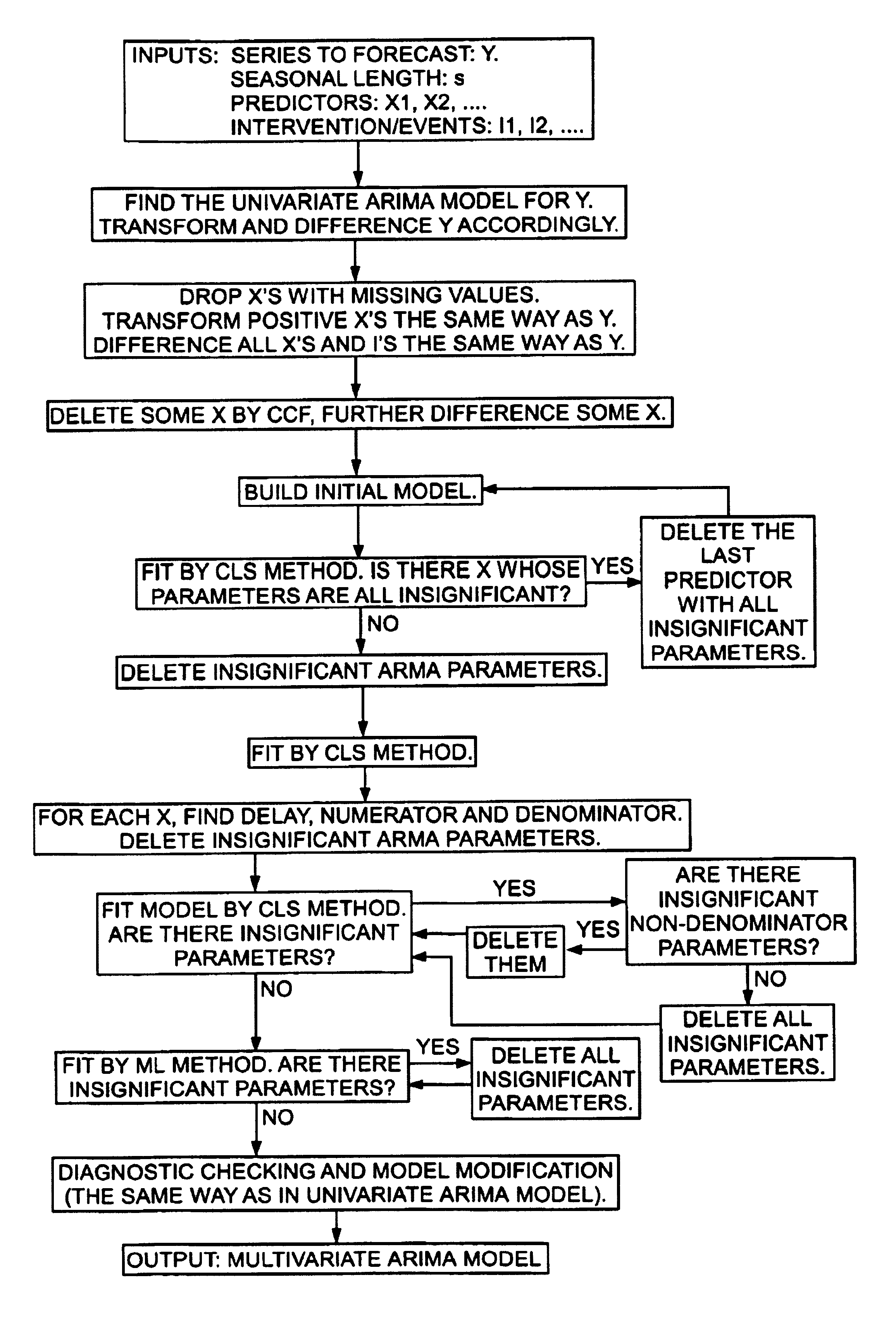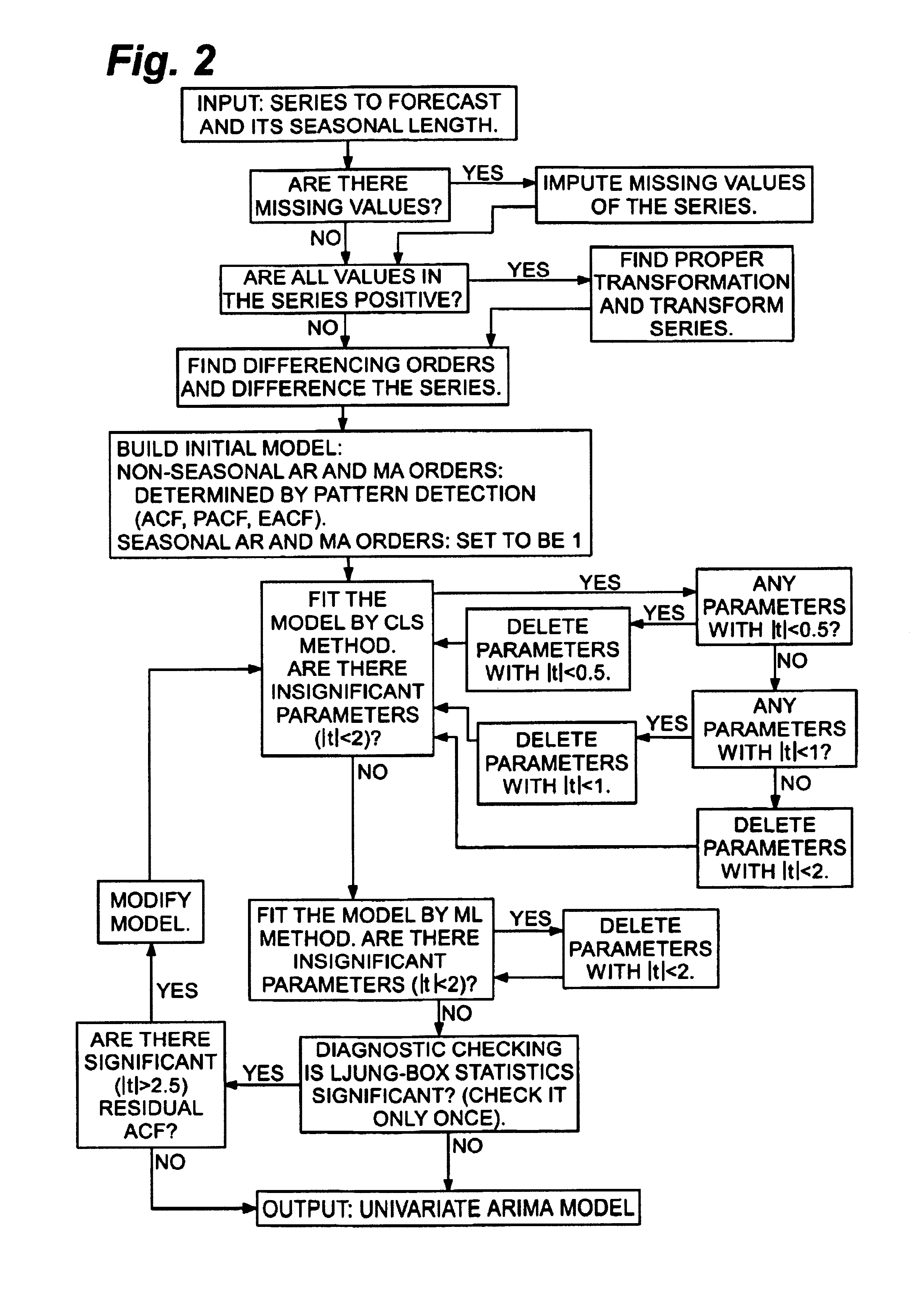System and method for building a time series model
a time series model and time series technology, applied in adaptive control, process and machine control, instruments, etc., can solve the problems of high labor intensity, difficult to estimate parameters, and the most difficult aspect of the forecasting process, and achieve the effect of more accurate parameter estimates
- Summary
- Abstract
- Description
- Claims
- Application Information
AI Technical Summary
Benefits of technology
Problems solved by technology
Method used
Image
Examples
example 1
Building a Univariate ARIMA Model for International Airline Passenger Data
[0141]In this example, the series is the monthly total of international airline passengers traveling from January 1949 through December 1960. FIG. 4 shows a graph wherein the y-axis depicts the number of passengers, expressed in thousands, and the x-axis shows the years and months.
[0142]Box and Jenkins (1976) studied this series and found that log transformation was needed. They identified the (0,1,1)(0,1,1) model for the log transformed series. As a result, model (0,1,1)(0,1,1) for log transformed series is called the “airline” model. Taking the monthly total of international airline passengers as the input time series to be forecasted and “12” as the input seasonal cycle, the method of this invention finds the same model for such series. FIG. 5 shows the predicted values by the model plotted along with the input time series. The predicted future values are shown for one year after the series ends at December...
example 2
Building the Multivariate ARIMA Model for Catalog Sales of Clothing
[0143]A multivariate ARIMA model was constructed for predicting catalog sales of men's and women's clothing, as illustrated in FIGS. 6A,B. Comprising simulated, raw data, the data set included the monthly sales of men's clothing and women's clothing by a catalog company from January 1989 through December 1998. Five predictors that may potentially affect the sales included:[0144](1) the number of catalogs mailed, designated as “mail”;[0145](2) the pages in the catalog, designated as “page”;[0146](3) the number of phone lines open for ordering, designated as “phone”;[0147](4) the amount spent on print advertising, designated as “print”; and[0148](5) the number of customer service representatives, designated as “service.”
[0149]Other factors considered included the occurrence of a strike (“strike”) in June 1995, a printing accident (“accident”) in September 1997 and the holding of promotional sales (“promotional sale”) i...
PUM
 Login to View More
Login to View More Abstract
Description
Claims
Application Information
 Login to View More
Login to View More - R&D
- Intellectual Property
- Life Sciences
- Materials
- Tech Scout
- Unparalleled Data Quality
- Higher Quality Content
- 60% Fewer Hallucinations
Browse by: Latest US Patents, China's latest patents, Technical Efficacy Thesaurus, Application Domain, Technology Topic, Popular Technical Reports.
© 2025 PatSnap. All rights reserved.Legal|Privacy policy|Modern Slavery Act Transparency Statement|Sitemap|About US| Contact US: help@patsnap.com



